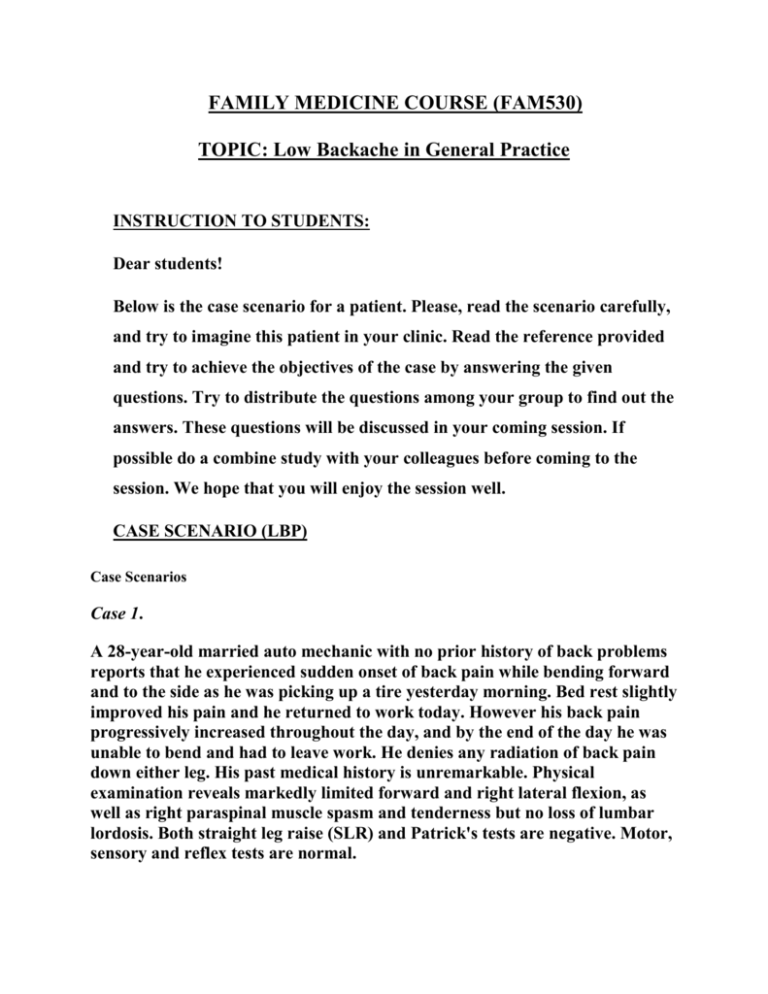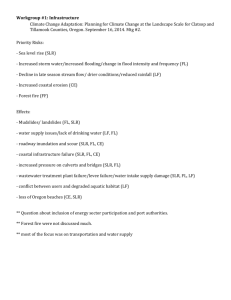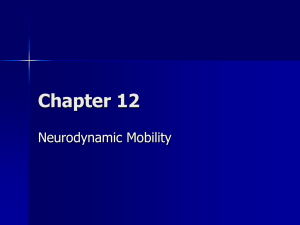TOPIC: Low Backache in General Practice
advertisement

FAMILY MEDICINE COURSE (FAM530) TOPIC: Low Backache in General Practice INSTRUCTION TO STUDENTS: Dear students! Below is the case scenario for a patient. Please, read the scenario carefully, and try to imagine this patient in your clinic. Read the reference provided and try to achieve the objectives of the case by answering the given questions. Try to distribute the questions among your group to find out the answers. These questions will be discussed in your coming session. If possible do a combine study with your colleagues before coming to the session. We hope that you will enjoy the session well. CASE SCENARIO (LBP) Case Scenarios Case 1. A 28-year-old married auto mechanic with no prior history of back problems reports that he experienced sudden onset of back pain while bending forward and to the side as he was picking up a tire yesterday morning. Bed rest slightly improved his pain and he returned to work today. However his back pain progressively increased throughout the day, and by the end of the day he was unable to bend and had to leave work. He denies any radiation of back pain down either leg. His past medical history is unremarkable. Physical examination reveals markedly limited forward and right lateral flexion, as well as right paraspinal muscle spasm and tenderness but no loss of lumbar lordosis. Both straight leg raise (SLR) and Patrick's tests are negative. Motor, sensory and reflex tests are normal. Case 2. A 35-year-old machinist has had occasional low back discomfort over the last 2 years but has not sought any medical advice. One week ago he felt excruciating pain with radiation down his left leg after pushing a heavy object at work that caused him to miss 3 days from work. After returning to work he experienced sharp pain in his lower back area with tingling and numbness in his left thigh, posterior calf, and lateral aspect of his left foot, mostly after prolonged standing and bending forward. He denies any bowel or bladder dysfunction. Past medical history is negative for cancer, immunosuppression or other systemic diseases. Your clinical evaluation reveals decreased pinprick sensation over the posterior aspect of the left calf and lateral foot, a diminished ankle jerk, but no motor weakness. Both SLR on the left and cross-over SLR tests are positive and limited to 45°. Patrick's test is negative. OBJECTIVES OF THE SESSION: At the end of this session, students will be able to: 1) Be able to assess and treat the patient presenting with acute back pain, 2) Be aware of red flag symptoms to exclude serious disease, 3) Be aware of yellow flag symptoms for psycho-social aspects of backache 4) Know the appropriate examination for a patient with back pain in primary care 5) Be able to conduct a focused history and physical examination to help place patients with low back pain into 1 of 3 broad categories: nonspecific low back pain, radiculopathy and specific spinal cause. 6) Reduce the number of people with disabling long-term back pain, and so reduce the personal, social and economic impact of low back pain. 7) Know the limit of images for the diagnosis of back pain, 8) Act as gate-keeper and not wasting valuable health resources, 9) Realize that for patients with simple LBP, continuation of usual activity is associated with better health outcomes, 10) Have knowledge of the preventive strategies available for back pain, 11) Be able to identify the needs of the patient with chronic back pain, 12) Know when to refer appropriately. FACILITATING QUESTIONS: 1) What are the broad three categories to which you can put a patient with low back pain? 2) What are the red flag symptoms of back pain? 3) What are the Yellow flag symptoms of back pain? 4) Identify the specific causes of back pain? 5) What are the clinical examinations you do for a patient with back pain? 6) What are the investigations you requested for a patient with back pain? 7) What are the criteria upon which you based your referral of back pain? 8) Mention the preventive strategies for back pain? Reference: 1. Postgraduate Tutorials In General Practice, Edward Warren 1996, 2. NICE clinical guideline 88, May 2009, 3. Diagnosis and Treatment of Low Back Pain: A Joint Clinical Practice Guideline from the American College of Physicians and the American Pain Society, 2007






